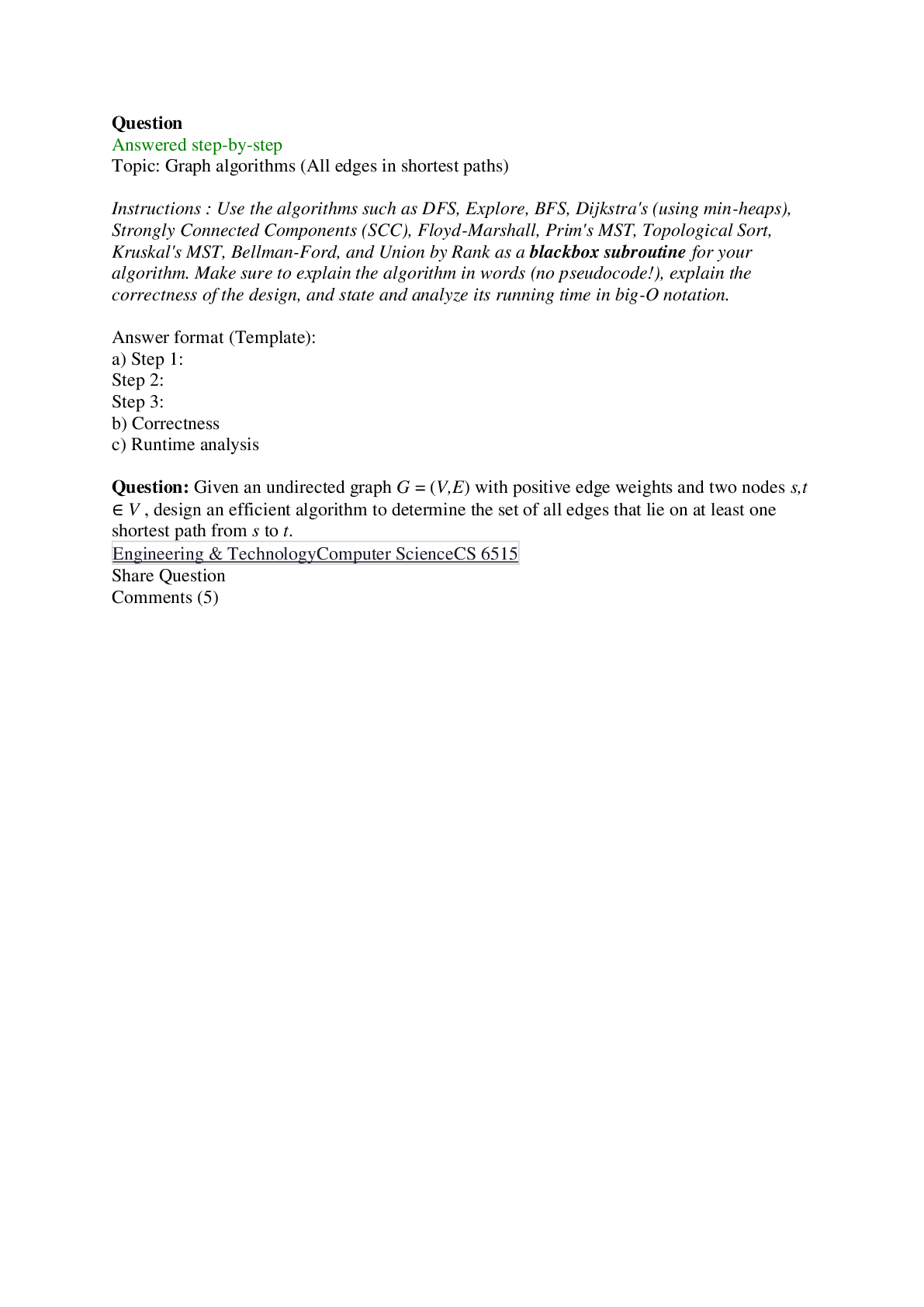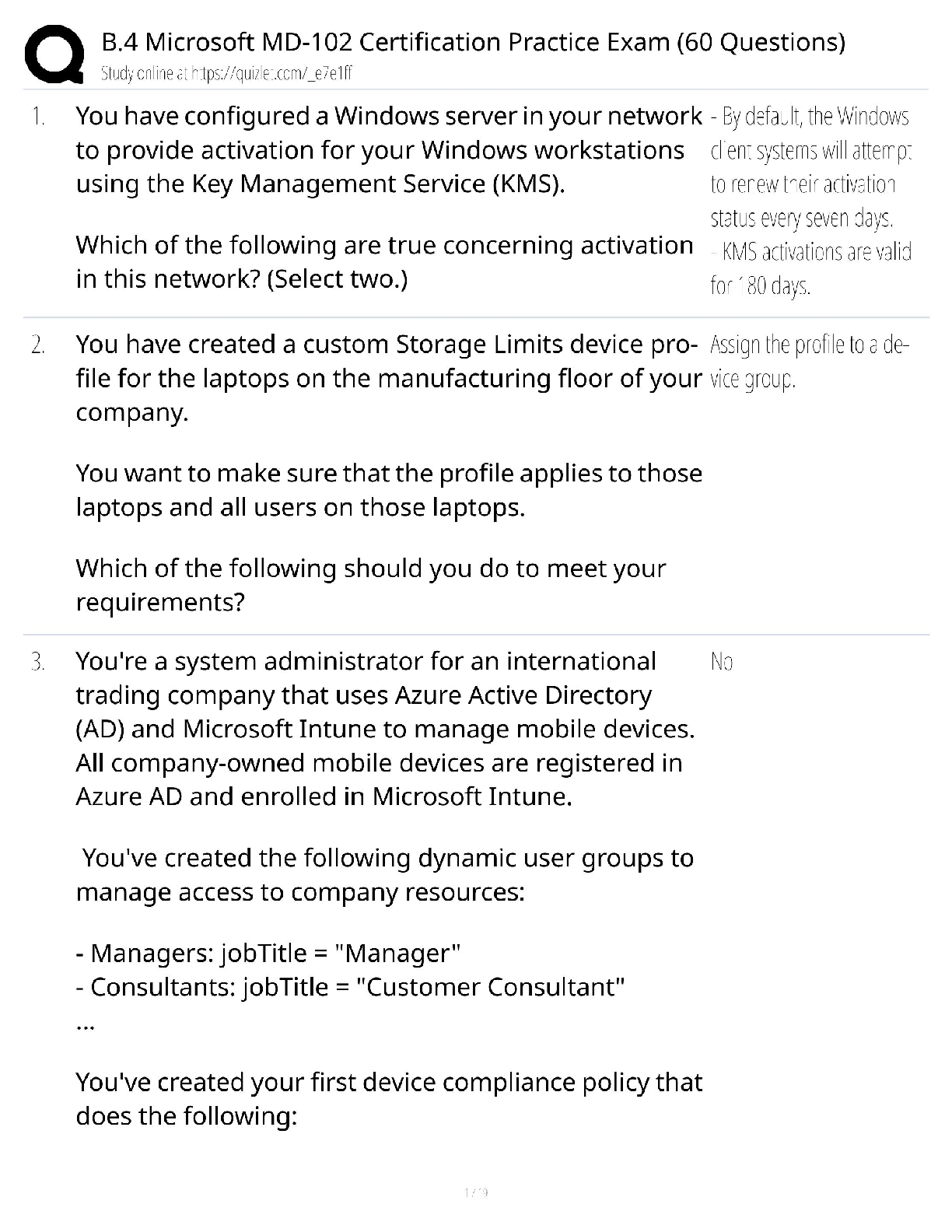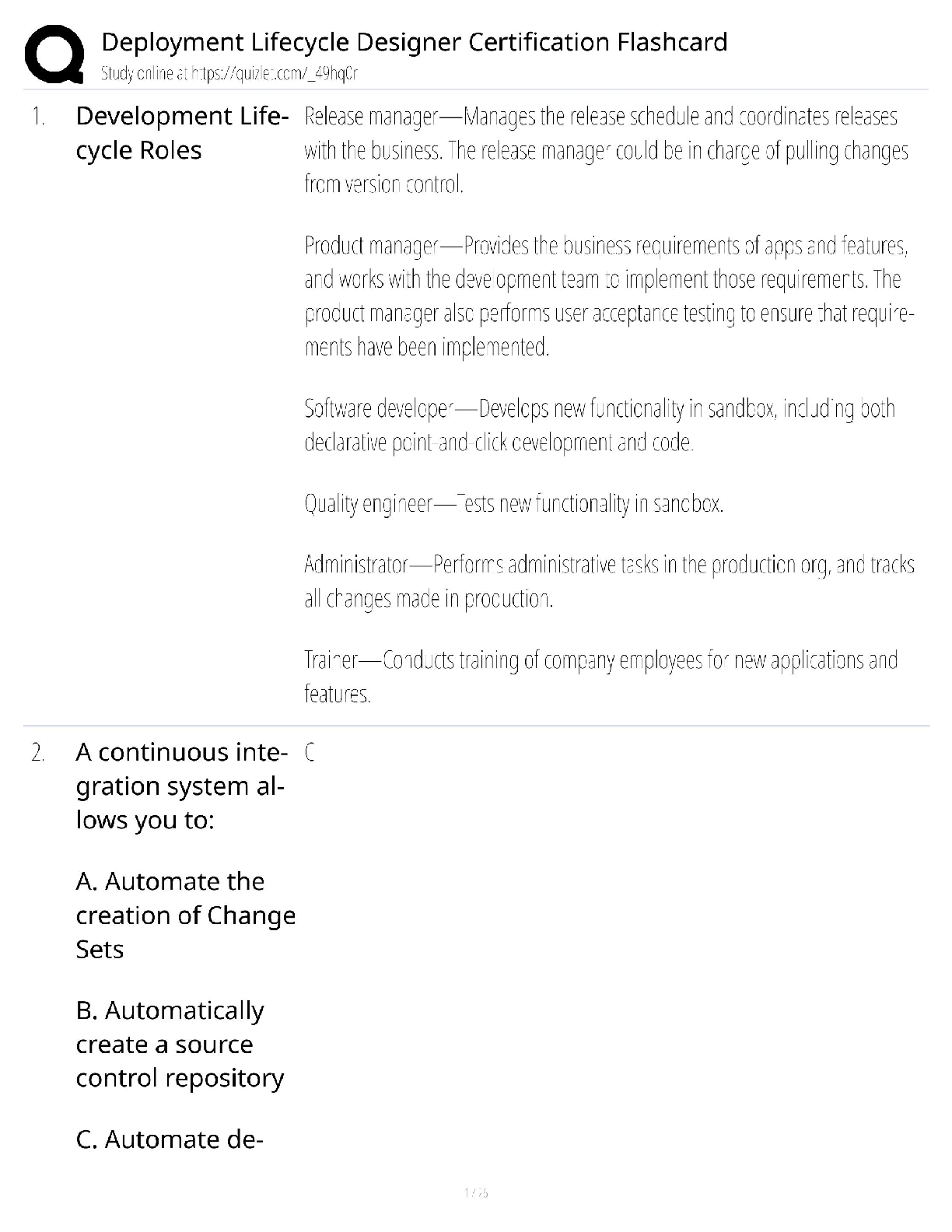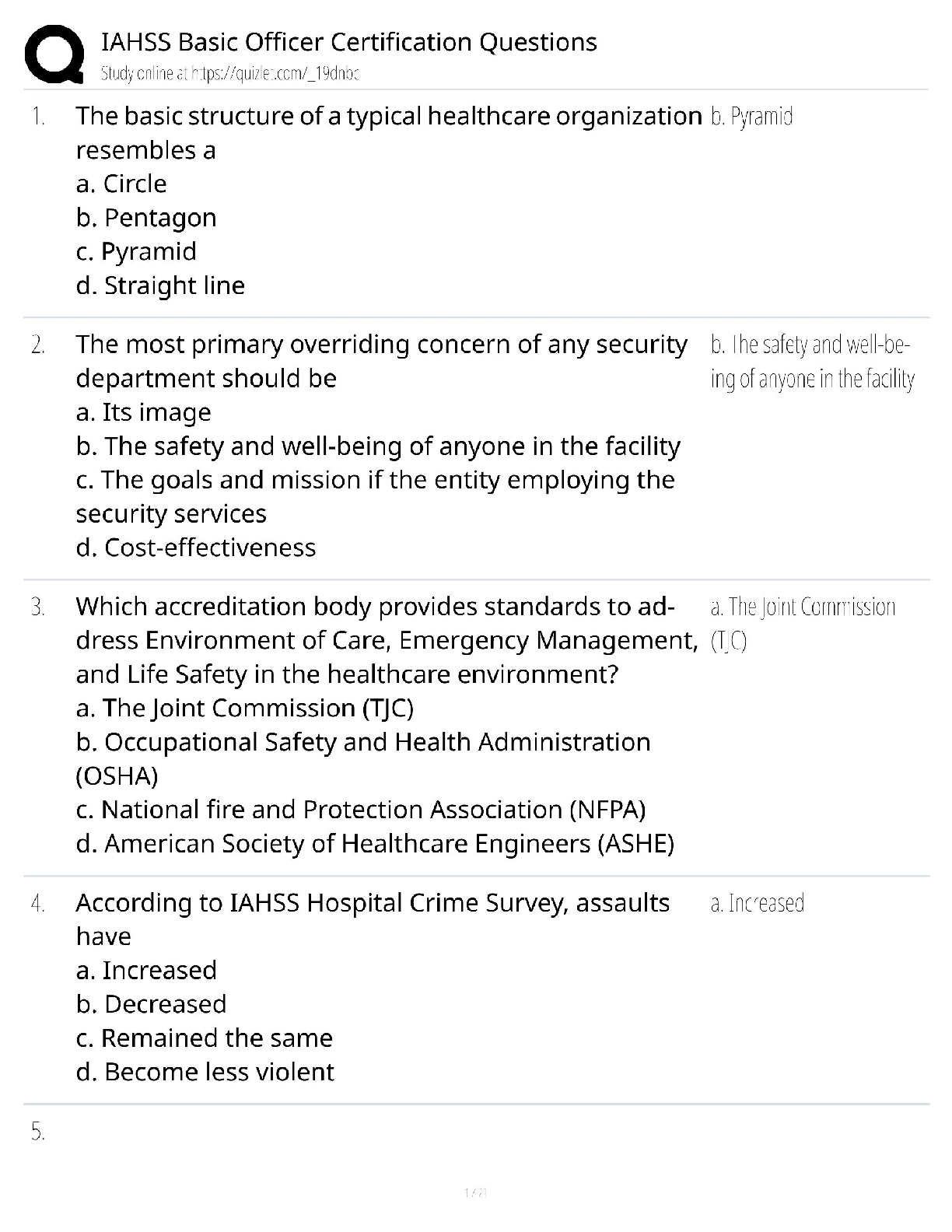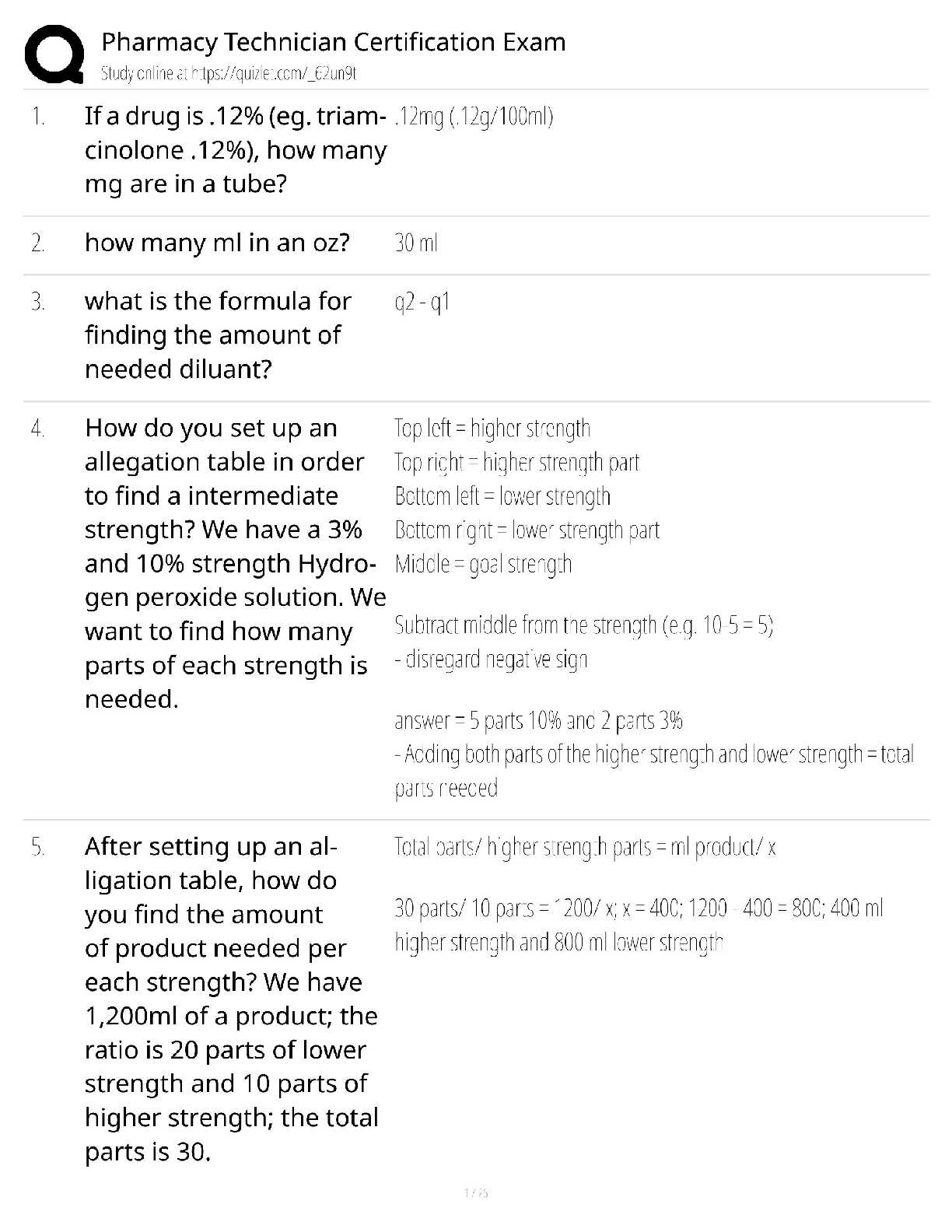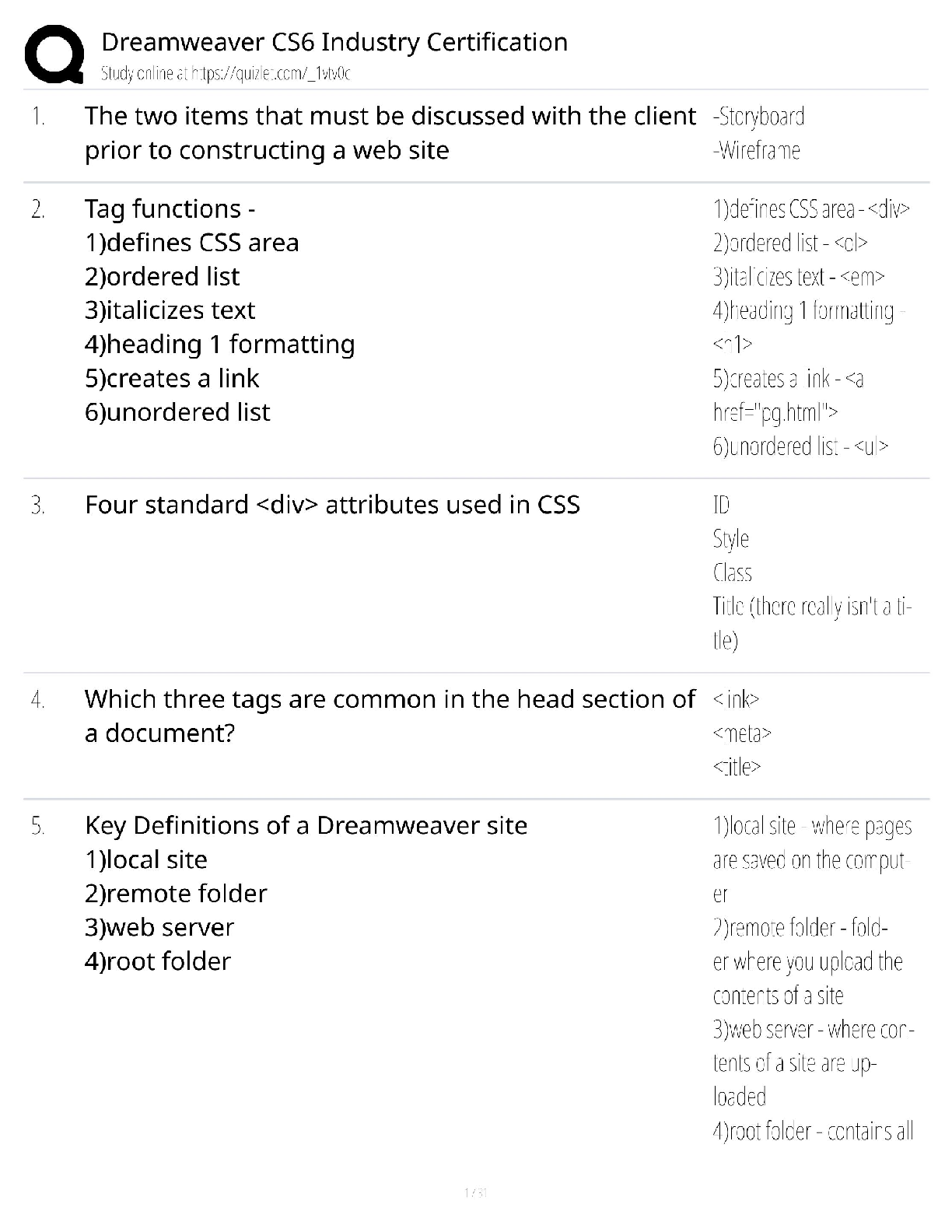CHAPTER 15 STOCKHOLDERS’ EQUITY IFRS questions are available at the end of this chapter WITH CORRECT ANSWERS
Document Content and Description Below
MULTIPLE CHOICE—Conceptual
21. The residual interest in a corporation belongs to the
a. management.
b. creditors.
c. common stockholders.
d. preferred stockholders.
Ans: C, LO: 1, Bloom: K, Di
...
fficulty: Easy, Min: 2, AACSB: Analytic, AICPA BB: None, AICPA FN: Reporting, AICPA PC: Communication, IMA: Reporting,
IFRS: None
22. The preemptive right of a common stockholder is the right to
a. share proportionately in corporate assets upon liquidation.
b. share proportionately in any new issues of stock of the same class.
c. receive cash dividends before they are distributed to preferred stockholders.
d. exclude preferred stockholders from voting rights.
Ans: B, LO: 1, Bloom: K, Difficulty: Easy, Min: 2, AACSB: Analytic, AICPA BB: None, AICPA FN: Reporting, AICPA PC: Communication, IMA: Reporting,
IFRS: None
23. The preemptive right enables a stockholder to
a. receive the same amount of dividends on a percentage basis as the preferred
stockholders.
b. receive cash dividendsafter other classes of stock withthe preemptive right.
c. buy capital stock back to the corporation at the option of the stockholder.
d. receive unequal amounts of dividends ona percentage basis as the preferred
stockholders,
Ans: A, LO: 1, Bloom: K, Difficulty: Moderate, Min: 2, AACSB: Analytic, AICPA BB: None, AICPA FN: Reporting, AICPA PC: Communication, IMA:
Reporting, IFRS: None
S24. In a corporate form of business organization, legal capital is best defined as
a. the amount of capital the state of incorporation allows the company to accumulate
over its existence.
b. the par value of all capital stock issued.
c. the amount of capital the federal government allows a corporation to generate.
d. the total capital raised by a corporation within the limits set by the Securities and
Exchange Commission.
Ans: B, LO: 1, Bloom: K, Difficulty: Easy, Min: 2, AACSB: Analytic, AICPA BB: None, AICPA FN: Reporting, AICPA PC: Communication, IMA: Reporting,
IFRS: None
S25. Common stockholders of a business enterprise are said to be the residual owners. The
term residual owner means that shareholders
a. are entitled to a dividend every year in which the business earns a profit.
b. have the rights to specific assets of the business.
c. bear the ultimate risks and uncertainties and receive the benefits of enterprise
ownership.
d. can negotiate individual contracts on behalf of the enterprise.
Ans: C, LO: 1, Bloom: K, Difficulty: Moderate, Min: 2, AACSB: Analytic, AICPA BB: None, AICPA FN: Reporting, AICPA PC: Communication, IMA:
Reporting, IFRS: None
26. Total stockholders' equity represents
a. a claim to specific assets contributed by the owners.
b. the maximum amount that can be borrowed by a company.
c. a claim against a portion of the total assets of a company.
d. only the amount of earnings that have been retained in the business.
Ans: C, LO: 1, Bloom: K, Difficulty: Easy, Min: 2, AACSB: Analytic, AICPA BB: None, AICPA FN: Reporting, AICPA PC: Communication, IMA: Reporting,
IFRS: None
15 - 9
27. A primary source of stockholders' equity is
a. income retained by the corporation.
b. appropriated retained earnings.
c. contributions by stockholders.
d. both income retained by the corporation and contributions by stockholders.
Ans: D, LO: 1, Bloom: K, Difficulty: Moderate, Min: 2, AACSB: Analytic, AICPA BB: None, AICPA FN: Reporting, AICPA PC: Communication, IMA:
Reporting, IFRS: None
28. Stockholders' equity is generally classified into two major categories:
a. contributed capital and appropriated capital.
b. appropriated capital and retained earnings.
c. retained earnings and unappropriated capital.
d. earned capital and contributed capital.
Ans: D, LO: 1, Bloom: K, Difficulty: Easy, Min: 2, AACSB: Analytic, AICPA BB: None, AICPA FN: Reporting, AICPA PC: Communication, IMA: Reporting,
IFRS: None
29. The accounting problem in a lump sum issuance is the allocation of proceeds between the
classes of securities. An acceptable method of allocation is
a. the pro forma method.
b. the proportional method.
c. the incremental method.
d. either the proportional method or the incremental method.
Ans: D, LO: 1, Bloom: K, Difficulty: Easy, Min: 2, AACSB: Analytic, AICPA BB: None, AICPA FN: Measurement, AICPA PC: Prob. Solving, IMA: Reporting,
IFRS: None
30. When a corporation issues its capital stock in payment for services, the least appropriate
basis for recording the transaction is the
a. market value of the services received.
b. par value of the shares issued.
c. market value of the shares issued.
d. The market value of the services received or the market value of the share issues
Ans: B, LO: 1, Bloom: C, Difficulty: Moderate, Min: 2, AACSB: Analytic, AICPA BB: None, AICPA FN: Measurement, AICPA PC: Prob. Solving, IMA:
Reporting, IFRS: None
31. Direct costs incurred to sell stock such as underwriting costs should be accounted for as
1. a reduction of additional paid-in capital.
2. an expense of the period in which the stock is issued.
3. an intangible asset.
a. 1
b. 2
c. 3
d. 1 or 3
Ans: A, LO: 1, Bloom: C, Difficulty: Difficult, Min: 2, AACSB: Analytic, AICPA BB: None, AICPA FN: Measurement, AICPA PC: Prob. Solving, IMA:
Reporting, IFRS: None
32. A "secret reserve" will be created if
a. inadequate depreciation is charged to income.
b. a capital expenditure is charged to expense.
c. liabilities are understated.
d. stockholders' equity is overstated.
Ans: B, LO: 1, Bloom: K, Difficulty: Easy, Min: 2, AACSB: Analytic, AICPA BB: None, AICPA FN: Reporting, AICPA PC: Communication, IMA: Reporting,
IFRS: None
Stockholders’ Equity
P33. Which of the following represents the total number of shares that a corporation may issue
under the terms of its charter?
a. Authorized shares
b. Issued shares
c. Unissued shares
d. Outstanding shares
Ans: A, LO: 1, Bloom: K, Difficulty: Easy, Min: 2, AACSB: Analytic, AICPA BB: None, AICPA FN: Reporting, AICPA PC: Communication, IMA: Reporting,
IFRS: None
S34. Stock that has a fixed per-share amount printed on each stock certificate is called
a. stated value stock.
b. fixed value stock.
c. uniform value stock.
d. par value stock.
Ans: D, LO: 1, Bloom: K, Difficulty: Easy, Min: 2, AACSB: Analytic, AICPA BB: None, AICPA FN: Reporting, AICPA PC: Communication, IMA: Reporting,
IFRS: None
S35. Which of the following is not a legal restriction related to profit distributions by a
corporation?
a. The amount distributed to owners must be in compliance with the state laws governing
corporations.
b. The amount distributed in any one year can never exceed the net income reported for
that year.
c. Profit distributions must be formally approved by the board of directors.
d. Dividends must be in full agreement with the capital stock contracts as to preferences
and participation.
Ans: B, LO: 1, Bloom: C, Difficulty: Moderate, Min: 2, AACSB: Analytic, AICPA BB: None, AICPA FN: Reporting, AICPA PC: Communication, IMA:
Reporting, IFRS: None
S36. In January 2017, Finley Corporation, a newly formed company, issued 10,000 shares of
its $10 par common stock for $15 per share. On July 1, 2017, Finley Corporation
reacquired 1,000 shares of its outstanding stock for $12 per share. The acquisition of
these treasury shares
a. decreased total stockholders' equity.
b. increased total stockholders' equity.
c. did not change total stockholders' equity.
d. decreased the number of issued shares.
Ans: A, LO: 2, Bloom: AP, Difficulty: Moderate, Min: 3, AACSB: Analytic, AICPA BB: None, AICPA FN: Measurement, AICPA PC: Prob. Solving, IMA:
Reporting, IFRS: None
P37. Treasury shares are shares
a. held as an investment by the treasurer of the corporation.
b. held as an investment of the corporation.
c. issued and outstanding.
d. issued but not outstanding.
Ans: D, LO: 2, Bloom: K, Difficulty: Easy, Min: 2, AACSB: Analytic, AICPA BB: None, AICPA FN: R
[Show More]
Last updated: 3 years ago
Preview 1 out of 56 pages

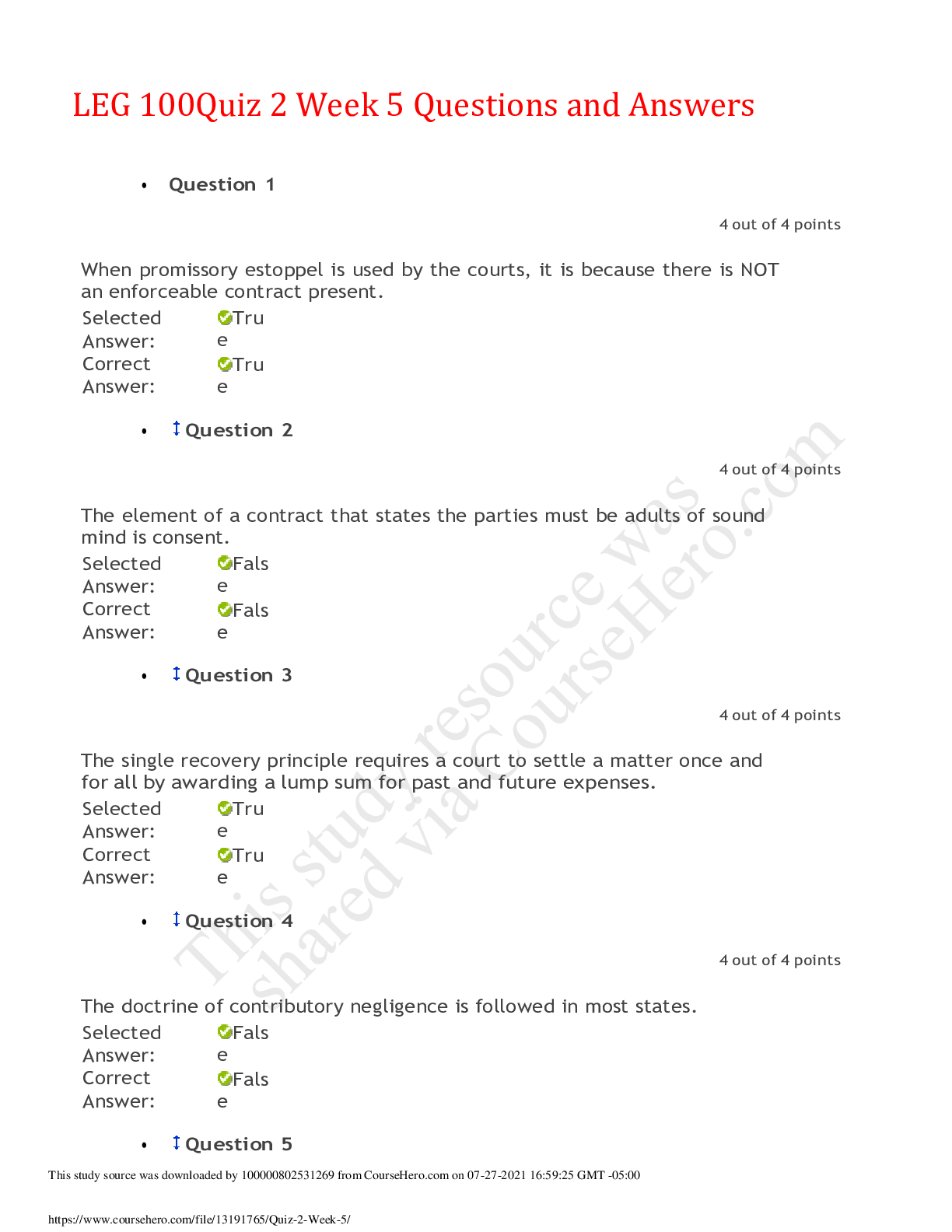
.png)
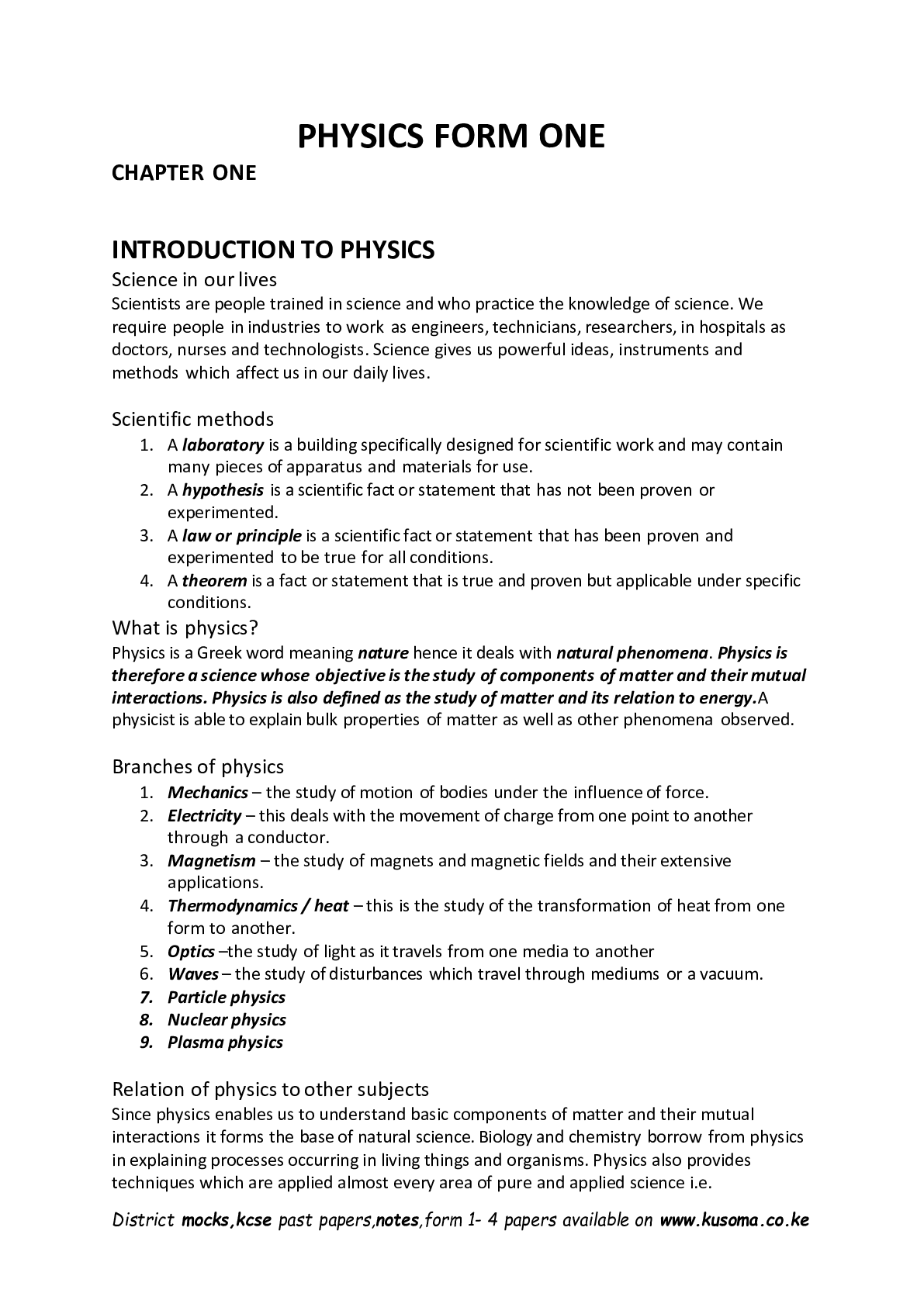


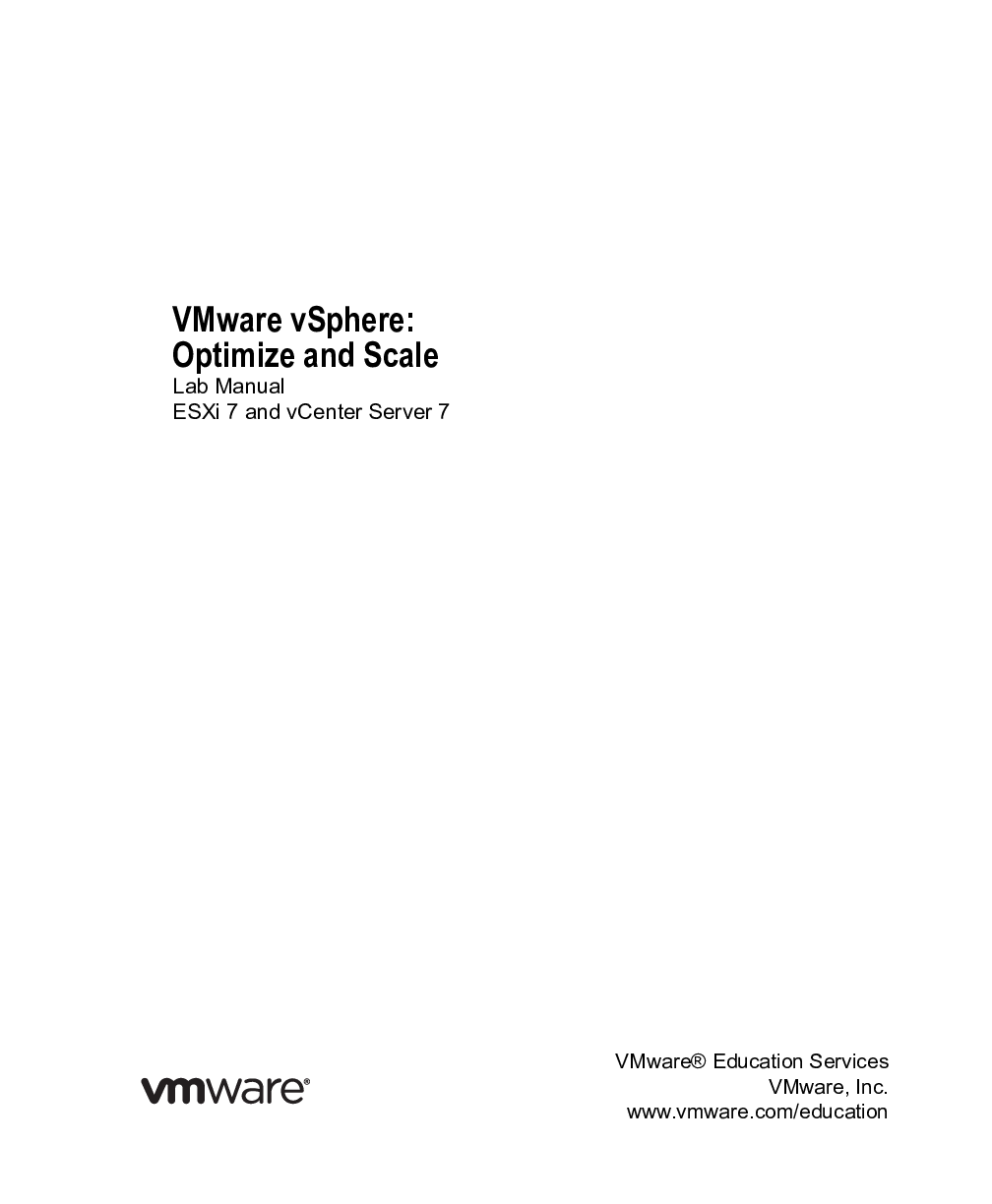





.png)


